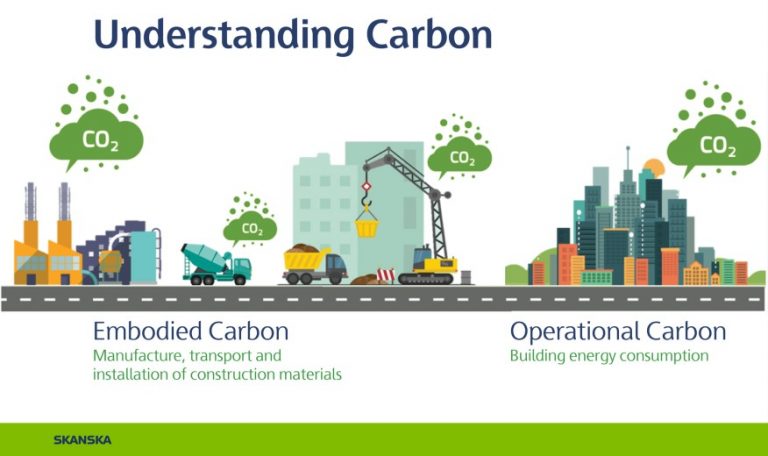Published on November 21, 2019

Two new widgets out of the Pacific Northwest aim to address what their developers say is a pressing need to begin using less carbon-intensive building materials. They work like meal-tracking apps, only for new construction. Input: Materials used in the building. Output: The amount of carbon dioxide used to produce the materials, called embodied carbon.
But the graph of a building’s carbon impact is a tall spike with a very long tail: Putting up a new building requires a large initial carbon-dioxide expenditure, mostly bound up in materials’ embodied carbon. And deadlines for reducing carbon emissions to stave off climate change are approaching rapidly.
That’s why green building groups have been turning their attention to reducing embodied carbon. But climate-conscious builders encountered a problem familiar to anyone who’s tried counting calories by hand: Because the information isn’t centralized, researching the embodied carbon in everything that goes into making a building — from concrete to carpets — is an overwhelming endeavor.
Enter EC3, North America’s first free, open-source tool for calculating embodied carbon. Incubated at the University of Washington and supported by more than 50 industry groups, including Microsoft, EC3 is launching in beta next week.
“There are really innovative products out there that aren’t getting to market because people aren’t prioritizing them,” said Kate Simonen, the UW architecture professor behind EC3. “There has to be a reason to try something new. Sometimes the reason, for building materials, can be the carbon reduction.”
Continue reading at The Seattle Times.
Originally written by Katherine Khashimova Long for The Seattle Times.